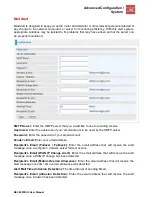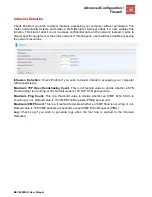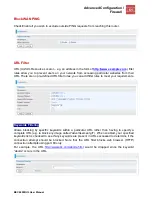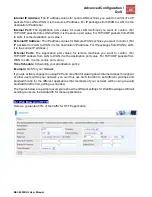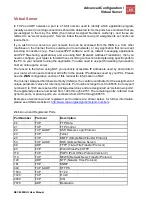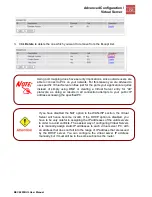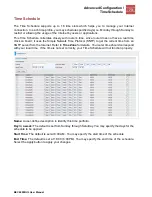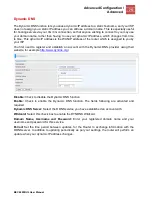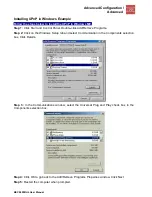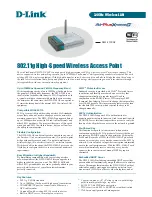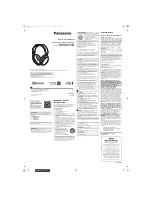
Advanced Configuration /
QoS
66
BEC 6800RUL User Manual
Internal IP Address:
The IP address values for Local LAN machines you want to control. (For IP
packets from LAN to WAN, it is the source IP address. For IP packages from WAN to LAN, it is the
destination IP address.)
Internal Port:
The Application port values for local LAN machines you want to control. (For
TCP/UDP packets from LAN to WAN, it is the source port value. For TCP/UDP packets from WAN
to LAN, it is the destination port value.)
External IP Address:
The IP address values for Remote WAN machines you want to control. (For
IP packets from LAN to WAN, it is the destination IP address. For IP packages from WAN to LAN,
it is the source IP address.)
External Ports:
The Application port values for remote machines you want to control. (For
TCP/UDP packets from LAN to WAN, it is the destination port value. For TCP/UDP packets from
WAN to LAN, it is the source port value.)
Time Schedule:
Scheduling your prioritization policy.
Example:
QoS for your Network
If you are actively engaged in using P2P and are afraid of slowing down internet access throughput
of other users within your network, you can thus use QoS function to set different priorities and
bandwidth ratio for the different applications that members of your network will be using to avoid
bandwidth traffic from getting overloaded.
The figures below are a simple example to show the different settings for Web Browsing and Email
sending to assure the bandwidth for these applications.
For Web Browsing (HTTP)
Here we guarantee 50% of the traffic for HTTP application.



